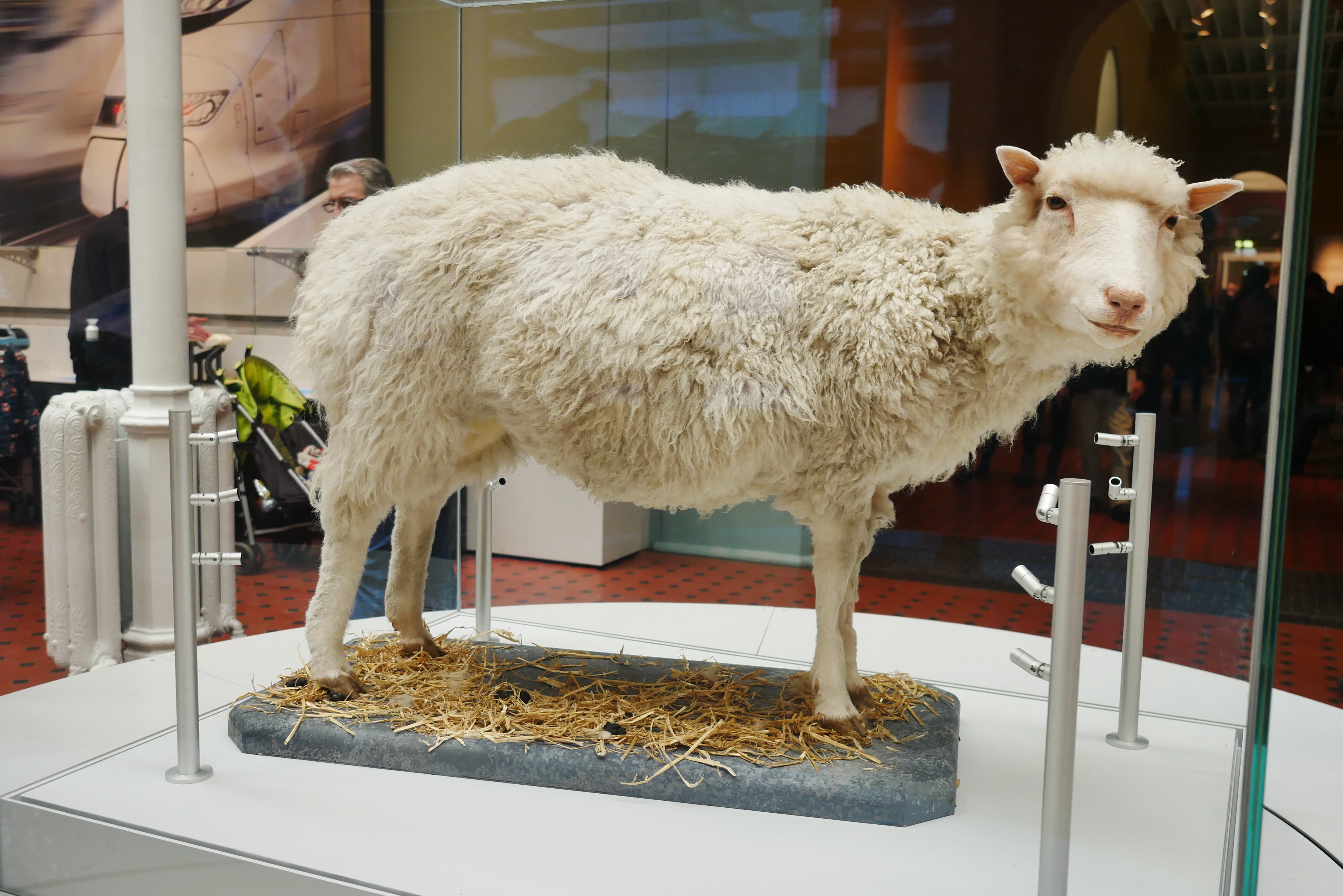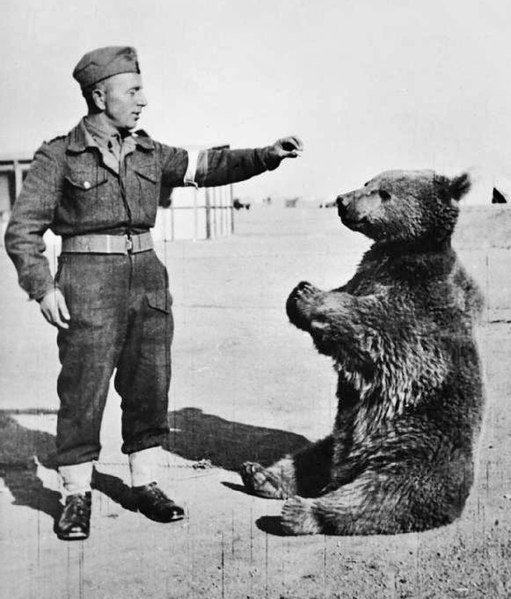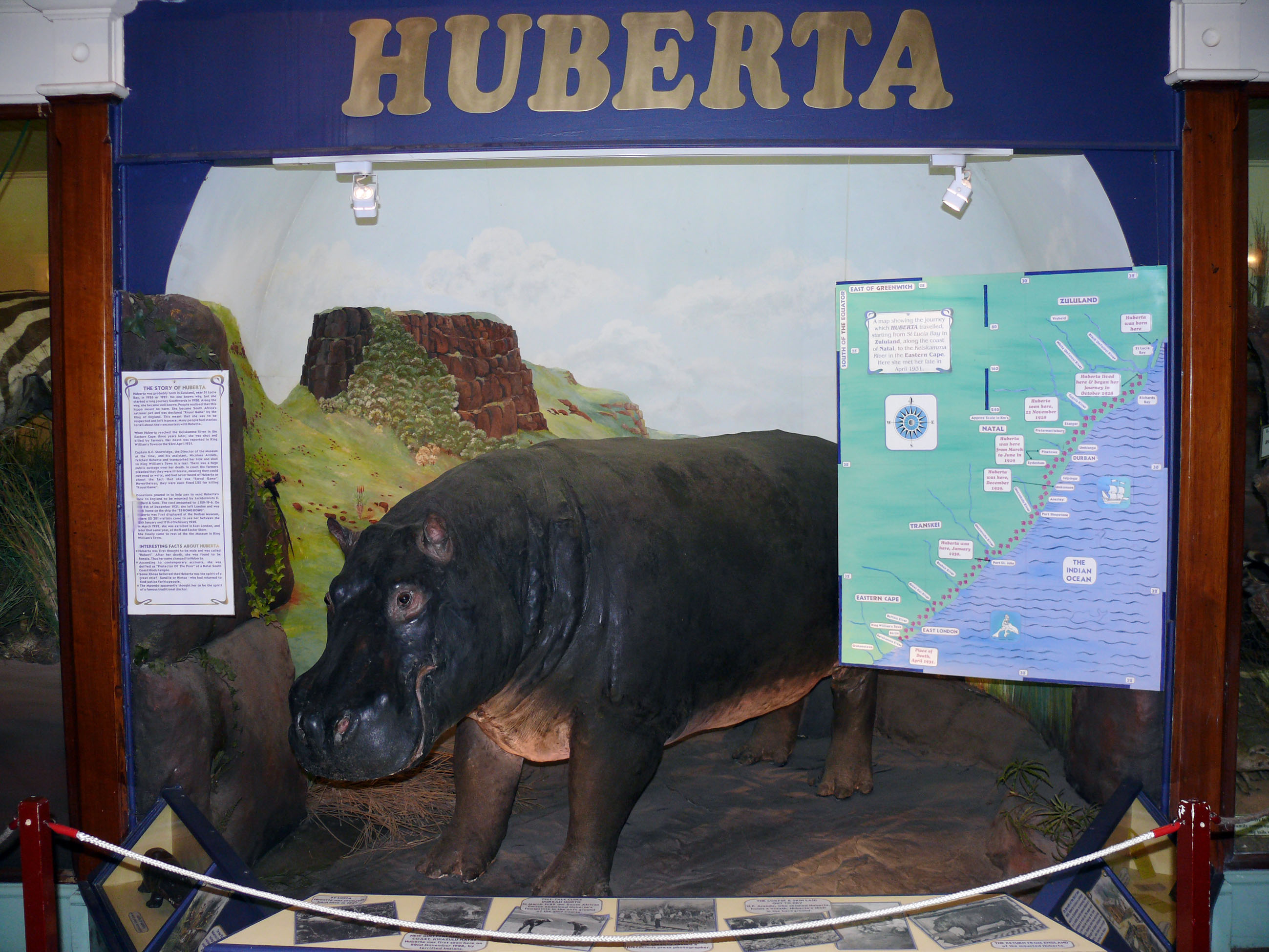Essential Tips for Choosing a Funeral Director
Choosing a funeral director requires thought and consideration to ensure that your loved one’s final...

 Search...
Search...
From a humble pigeon to a huge hippopotamus, not all animals that capture the imagination of the world are cats or dogs. The stories of unique animals tend to live in the human consciousness well after they have passed because of just how unique they are. From scientific marvels to war heroes, these quirky creatures are loved all over the world and their memories live on well after they have passed on.
Dolly the Sheep

Dolly wasn't just any sheep. While she looked and sounded like any regular sheep, her birth was a medical marvel that sparked a media frenzy. Using a cell taken from the mammary gland of an adult Finn Dorset sheep and an egg cell from a Scottish Blackface sheep, Dolly's miraculous birth in 1997 from her surrogate mother made the sheep the first mammal to be cloned from an adult cell. Not only did this give scientists a better understanding of genetically modified livestock, but it opened up a world of possibilities in human biology and medicine, especially for stem cell research. Dolly spent her life at the Roslin Institute, where she was born. Dolly went on to mother six lambs during her life. In 2000, Dolly was infected with a virus that causes lung cancer in sheep. Three years later, at the age of six, the decision was made to euthanize Dolly rather than risk her suffering. Dolly's remains are a popular display in the National Museum of Scotland to this day, as she continues to inspire people to dream of the possibilities of modern science and medicine.
Koko the Gorilla

Hanabiko, better known as Koko, was a female western lowland gorilla who was born in the San Francisco Zoo. As an ambassador for her species, Koko was able to communicate using more than 1,000 signs in a version of American Sign Language (ASL). Dr Francine Patterson began teaching the young gorilla ASL as part of a Stanford University study in 1974. Koko was also famous for being a cat lover, having been gifted a number of kittens throughout her life that she cared deeply for, signing the words "cat" and "baby" apon choosing two kittens for her 44th birthday. Koko passed away at age 49 in 2018. While her use of the language is often debated, her capacity for empathy, love and connection to humans touched the hearts of millions around the world, and her story goes on to advocate for the protection of her species.
Cher Ami the Pigeon

The life of a carrier pigeon in World War I was a treacherous one. The US Army used nearly 600 carrier pigeons during the war as a reliable, fast and convenient form of communication, making the birds targets for enemy fire as the opposing side attempted to intercept messages and halt communication. It was one pigeon's valiant efforts to save the Lost Battalion, however, that would go on to live in infamy. In October 1918, a battalion of American soldiers became trapped behind enemy lines, cutting them off from reinforcements and supplies and pitting them against a much larger enemy force for several days. After two days, the American heavy artillery began to bombard the trapped soldiers on accident, killing 30 men in the process. Major Charles Whittlesey attempted to communicate with their countrymen, but watched bird after bird fail to make it through the enemy fire. In desperation, the Major sent out his last pigeon with a simple note that read "We are along the road parallel to 276.4. Our own artillery is dropping a barrage directly on us. For heaven's sake, stop it." The bird flew straight through the enemy fire, and at one point was downed from a hit in the chest. However, the brave Cher Ami survived and got back up to complete the 40km journey to deliver the message. Thanks to Cher Ami, the artillery stopped firing on the Lost Battalion and fired on German troops elsewhere. 194 men were able to make it back to safety. While Cher Ami sustained significant injuries during the flight, including losing a leg, becoming blind in one eye and his chest wound, the bird was treated and recovered. For his sacrifice, Cher Ami was awarded the French Croix de Guerre, one of the nation's highest military honours for gallantry in the field. Cher Ami lived out the remainder of his life back in the US with trainer Captain John Carney, and eventually passed away in 1919, his body being taxidermied and presented to the US Government with honour. Many American families owe their lives to the courageous bird, who's bravery and self-sacrifice saved so many.
Montauciel the Sheep

In the summer of 1783, the Montgolfier brothers were debuting their brand-new invention in front of King Louis XVI and his wife, Marie Antoinette. The hot air balloon, crafted from paper and cloth, was about to make it's official debut, but the pioneers feared the effects of high altitudes on the human body. They decided that the flight would instead be piloted by a rooster, a duck and a sheep named Montauciel, meaning "climb to the sky". The three were chosen as the control group as the rooster was a flightless bird, the duck was a bird that regularly flew at that altitude and the sheep's physiology was deemed to be the closest to humans. The beautiful balloon, decorated in golden embellishments and paintings of suns and the zodiac made its maiden voyage to 460m into the sky for eight minutes at the Royal Palace of Versailles. The landing was largely successful, the only recorded injury being from Montauciel kicking the rooster inside their cage. After the flight, it is said that the sheep was adopted by Marie Antoinette herself and lived the remainder of his life in luxury. This small feat gave humans the confidence to take to the skies and allowed the creatures to live in infamy as the first living creatures to take flight in a man-made craft.
Mr Magoo the Mongoose

Nearly 60 years ago, the plight of a little mongoose captivated the people of the United States. Also referred to as the Duluth Mongoose, the little creature was brought to the United States on an Indian ship as a pet before being gifted to the Lake Superior Zoo in 1962. The chubby little mongoose captivated the country for his humorous qualities, including his affinity for a cup of tea with milk. At the time, Mr Magoo was thought to be the only mongoose in captivity in the United States, and for good reason. The importation of mongooses was prohibited at the time by the US Fish and Wildlife Service in a bid to control the population. As a result, the mongoose was deemed an "undesirable alien", a trespasser on US soil, and was threatened with deportation or worse, euthenasia. The city of Duluth went up to bat for their beloved mongoose, saying that Mr Magoo was "very popular with adults and children and is clean, healthy and well-mannered." The public erupted into a panic to save their beloved friend, signing petitions, lobbying congressmen and the Mayor himself seeking a stay of sentence. The extensive news coverage made the mongoose all the more popular at the zoo, capturing the hearts of each of his visitors. Finally, their plea was heard by the US Government, who eventually granted the mongoose a temporary residence permit, political asylum, and finally, a full federal pardon for his crime, citing that "we have concluded that Mr Magoo can stay but the rest of his species will have to stay out." Thousands of Americans rejoiced at their furry little friend being allowed to stay, and the Zoo made plans to upgrade his little house inside the enclosure. Mr Magoo lived out the remainder of his happy life in the Duluth Zoo, passing away from old age in 1968. As his obituary in the Duluth Herald stated, "he had that certain spark that gives some animals a special appeal. Another mongoose could never take his place in the hearts and affections of Duluth people."
Wojtek the Bear

Like Cher Ami, Wojtek the bear was an unlikely hero, this time of the second World War. In the mountains of Northern Iran, a young brown bear cub was orphaned when his mother was killed by hunters. Luckily, a little boy found and adopted the small cub. Shortly after, in 1942, the boy and his bear met some Polish soldiers who were on their way to Iraq. Immediately taken with the small, tired and hungry-looking bear, the Polish soldiers purchased the bear in exchange for Persian coins, chocolate, a Swiss army knife and a tin of beef. They fed the bear with diluted condensed milk from an old vodka bottle, hiding the bear from their superiors. However, the bear was soon discovered, but was allowed to stay as the unit's mascot. The cheeky bear began adopting the behaviours of his friends, learning to salute, drink beer, smoke and take showers to cool off. He also got into a lot of trouble, stealing a clothesline full of women's underwear and raiding the unit's Christmas feast to find tasty treats. The bear eventually made up for his transgressions, however, when he snuck into the bathing tent to cool off, but discovered an enemy of the army sneaking into the camp to steal supplies. The man's horrified screams upon seeing the large brown bear was enough to alert the army of his presence, and resulted in his quick arrest. Eventually, when the Polish army was deployed to Italy, they wanted Wojtek to remain at their side. To make this possible, the bear was given a service number, the rank of Private and a book to record his official pay of food. Along with his human companions, the bear faced many of the hardships endured by the soldiers in World War II. It is believed that the bear continued to imitate his human friends, as he began carrying crates of ammunition to the front lines, helping to instill the fighting spirit in the soldiers as he went. When the war was over, the Polish soldiers brought their furry friend with them to a settlement camp in Scotland, after which Wojtek was moved to the Edinburgh Zoo, where he lived out the remainder of his days. He eventually passed away in 1963, in his early 20's, and was memorialised in Polish granite in the West Princess Street Gardens. It is rumored that in his days in the zoo, the bear never forgot his Polish friends, as the bear would stand on his hind legs and salute any time he heard a guest speak in Polish or with a Polish accent.
Huberta the Hippopotamus

A wanderer of a Hippopotamus quickly became one of the most famous animals in South African history for her spirit of exploration. It is speculated that Huberta was born in the 1920's in St Lucia Estuary, KwaZulu-Natal. For reasons unknown, the hippopotamus left her watering hole home to begin an unusual pilgrimage across the nation. She was first spotted by workers as she ate her way through a field of sugarcane, and immediately gained the attention of the locals. With her gender initially unknown, newspapers named her Hubert the Hippo, and camera crews, reporters and crowds watched as she continued her southbound journey along the north coast railway line. On her journey, she crossed the Black Umfolozi, swam in the beach at Durban, bathed in a pond in a monastery's gardens, stopped traffic as she napped on train tracks, escaped the clutches of the Johannesburg Zoo, crashed a fancy country club party and grazed across golf courses, travelling an estimated 1,600km in three years. Eventually, the Natal Provincial Council proclaimed the hippo as "Royal Game", protecting her from the hunters that constantly stalked her throughout her journey. Her purpose was so speculated on that religions began to adopt her as a deity, with the Indian population beating drums, burning incense and sacrificing a goat in her honour, the Zulus believing she had a sacred connection to the Great King Shaka as she spent so much time in their pools, and the Pondo people believing she was a famous witchdoctor reincarnated. Eventually, her journey came to a sad end as three farmers, who claimed to not know about the protected beast, shot her in the Keiskamma River in 1931. The people of South Africa were so outraged as the hippo had become a symbol of hope for those suffering through the Great Depression that the farmers were charged 25 pounds each - a huge amount of money at the time. Her remains were recovered, and she remains on display today in King Williams Town.
By Claudia Slack
Sources: